Joyce J. Scott: Walk a Mile in My Dreams
Joyce J. Scott: Walk a Mile in My Dreams features a new large-scale commission and nearly 140 objects across the full arc of the artist’s career BALTIMORE, MD On March 24, the Baltimore Museum of Art (BMA) opened the 50-year career retrospective of artist Joyce J. Scott (b. 1948, Baltimore, MD), encompassing the full range and depth of her prolific and genre- defying practice. Joyce J. Scott: Walk a Mile in My Dreams features nearly 140 works from the 1970s to the present—including sculpture, jewelry, textiles, artwear garments, performance compilations, prints, mixed-media installations, and a new large-scale commission. The astonishing virtuosity and ingenuity of Scott’s work in every medium seamlessly coalesces with her lifelong vision to confront racism, sexism, classism, and “all the ‘isms’ society offers” through impish and audacious humor, expressions of beauty, and a humanistic engagement with global events. Her innate ability to move across medium and genre, leveraging her materials to speak fearlessly to subjects of deep personal and communal meaning make her one of the most significant artists of our time and deserving of greater scholarly study and public recognition. Joyce J. Scott: Walk a Mile in My Dreams is co-organized by the BMA and the Seattle Art Museum (SAM) and co-curated by Cecilia Wichmann, BMA Associate Curator of Contemporary Art, and Catharina Manchanda, SAM Jon and Mary Shirley Curator of Modern and Contemporary Art, with support from Leslie Rose, Joyce J. Scott Curatorial Research Assistant. The exhibition will be presented in Baltimore as a special ticketed exhibition from March 24 through July 14, 2024, and in Seattle from October 17, 2024, through January 20, 2025. Joyce J. Scott: Walk a Mile in My Dreams is accompanied by a fully illustrated 288-page catalog that offers new scholarship, artist reflections, and a selection of vital out-of-print source materials.
Installation view of Joyce J. Scott: Walk a Mile in My Dreams at the Baltimore Museum of Art, March 2024. Photo by Mitro Hood.
“Joyce J. Scott is a living legend and a pillar of Baltimore’s artistic community. Her multidisciplinary practice is in a word, magnetic, distinguished in its ability to conjure moments of beauty and awe, while also bringing people into conversation about challenging subjects in a way that is open and embracing. Her work is deeply rooted in both local and global contexts, vibrating with a resonance that is utterly and uniquely Joyce,” said Asma Naeem, the BMA’s Dorothy Wagner Wallis Director. “The
Joyce J. Scott. Joyce's Necklace. c. 1978-85. Rotasa Collection. © Joyce Scott courtesy Goya Contemporary. photo: Ian Reeves
BMA has had the honor of engaging audiences with Scott’s work for many years through exhibitions, public programs, and acquisitions. We are thrilled now to present this comprehensive exhibition that highlights the remarkable range of her career.” Scott has embraced her identity as an artist and performer since childhood. At home in Baltimore, her mother, the artist Elizabeth Talford Scott (1916–2011)—who is also currently the subject of a solo exhibition at the BMA and eight partner sites across Baltimore City—taught her to sew and express herself creatively. Scott considers this knowledge her inheritance: both the specific techniques and aesthetic traditions carried by enslaved people from Africa to the Americas and the awareness of her own life’s potential as part of a continuum.
In the 1970s, Scott began what would become a lifelong commitment to artistic learning and engagementwith global cultures. Her extensive travels have taken her to many countries, including Mexico, Cuba, Peru, Mali, Senegal, Scotland, South Africa, Thailand, and Italy, where she connected with local artisans and community members through a shared embrace of textiles, beads, and glass. As a result, Scott’s work has responded to global events—from the AIDS crisis to South African Apartheid and to American police brutality—and served to memorialize personal and collective transformations and traumas.


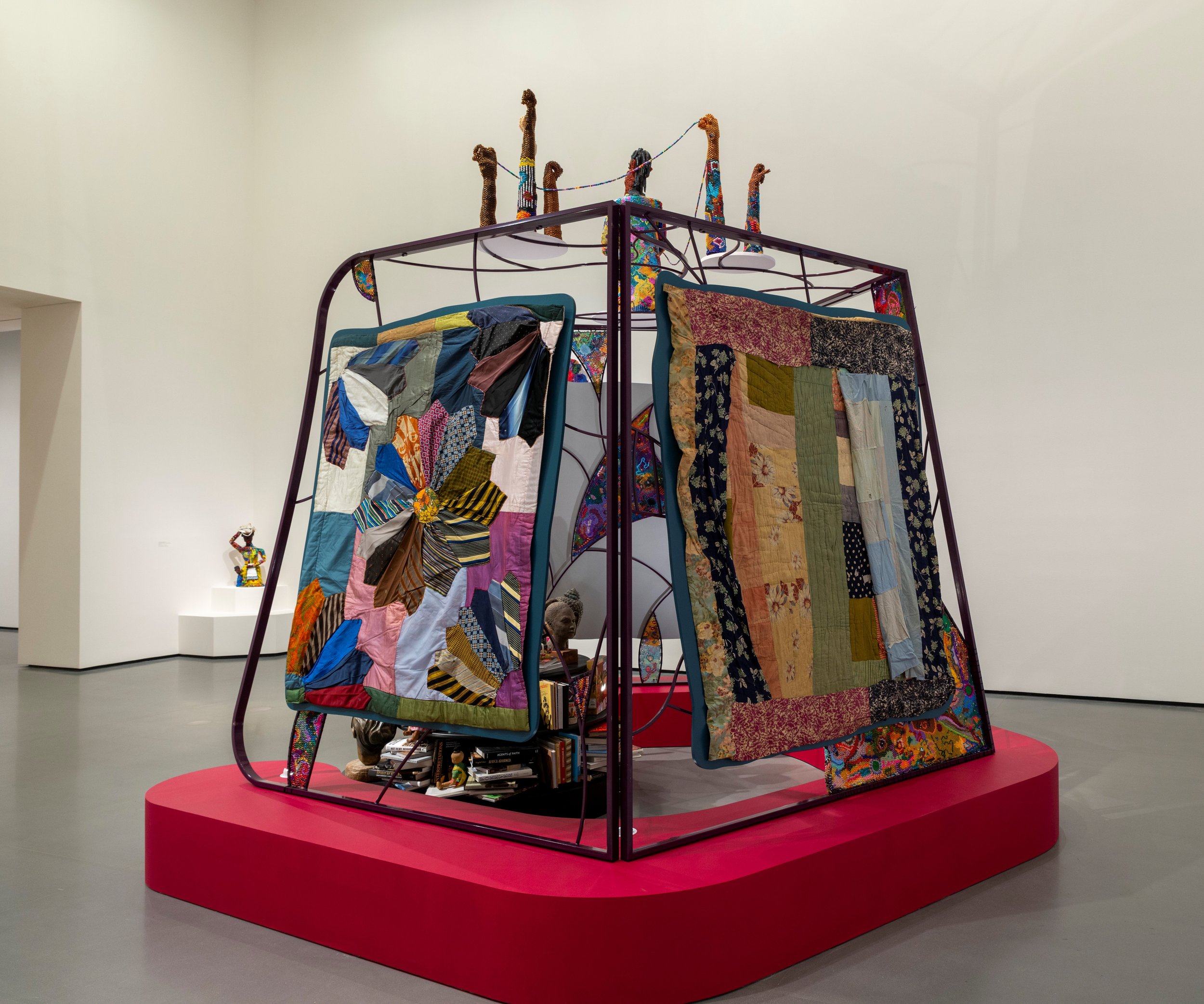







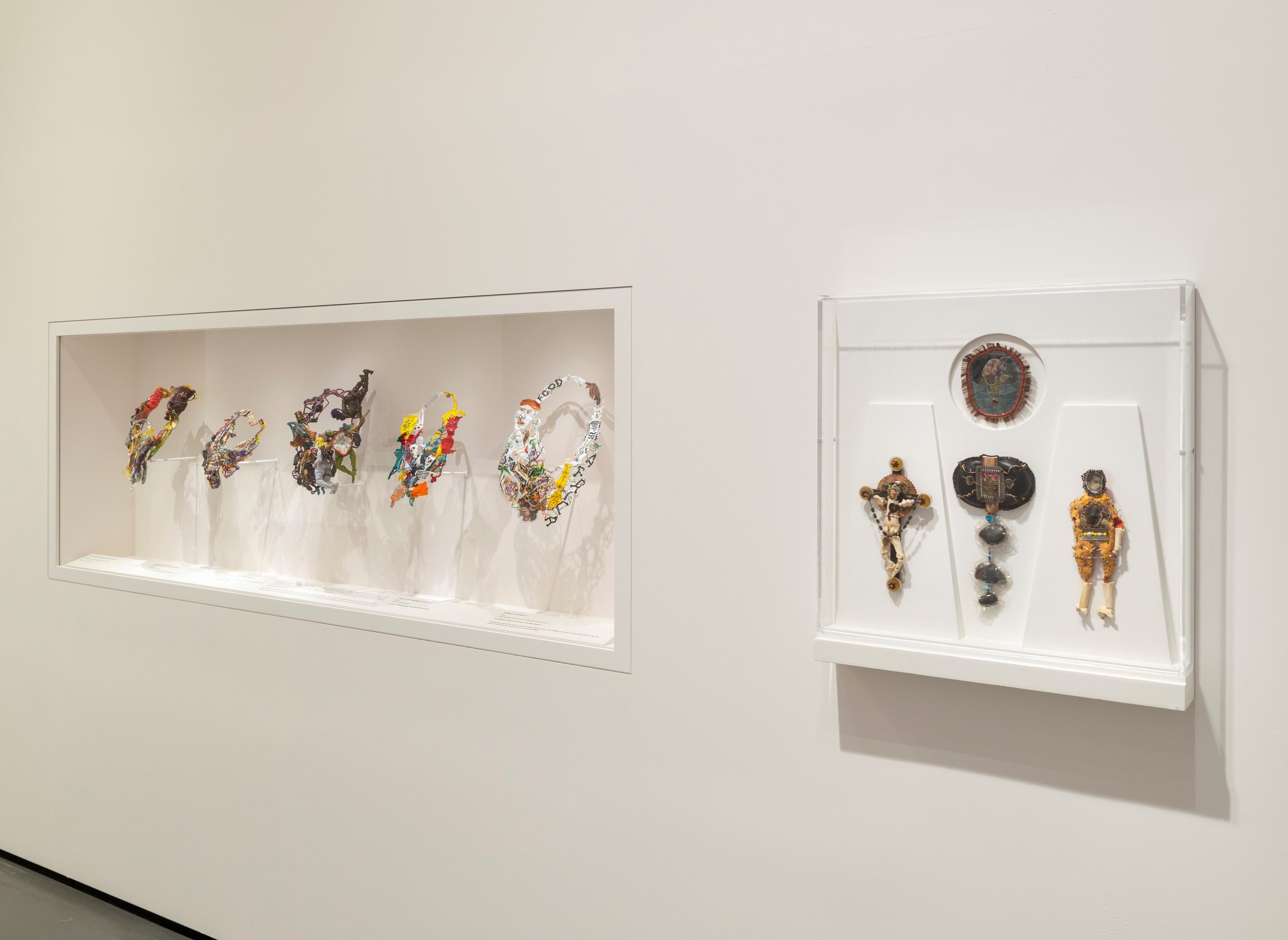





Installation view of Joyce J. Scott: Walk a Mile in My Dreams at the Baltimore Museum of Art, March 2024. Photo by Mitro Hood.
Joyce J. Scott: Walk a Mile in My Dreams draws on the BMA’s long commitment to Scott’s work, from the first acquisition in 1984 to a mid-career retrospective co-organized with the Maryland Institute College of Art’s groundbreaking Exhibition Development Seminar in 2000 and many recent acquisitions.
Kay Lawal and Joyce Scott for the Thunder Thigh Revue's Women in Substance performance, Baltimore. 1985. Philip Arnoult papers, Special Collections, Sheridan Libraries, Johns Hopkins University. © Joyce Scott courtesy Goya Contemporary, photo: Peggy Fox
The exhibition also reflects Scott’s longstanding engagement in the Seattle region through residencies at such venues as Pilchuck Glass School in 1992 and also includes a major sculpture recently acquired by SAM. The BMA’s exhibition is organized in ten thematic sections, with pivotal works reflecting the artist’s cyclical return to motifs and materials over time as she brings forward new ideas and fosters dialogue to support personal healing and critical social change. Additionally, the exhibition includes an expansive array of archival photography drawn in part from the artist’s personal collection. Among the exhibition highlights are:










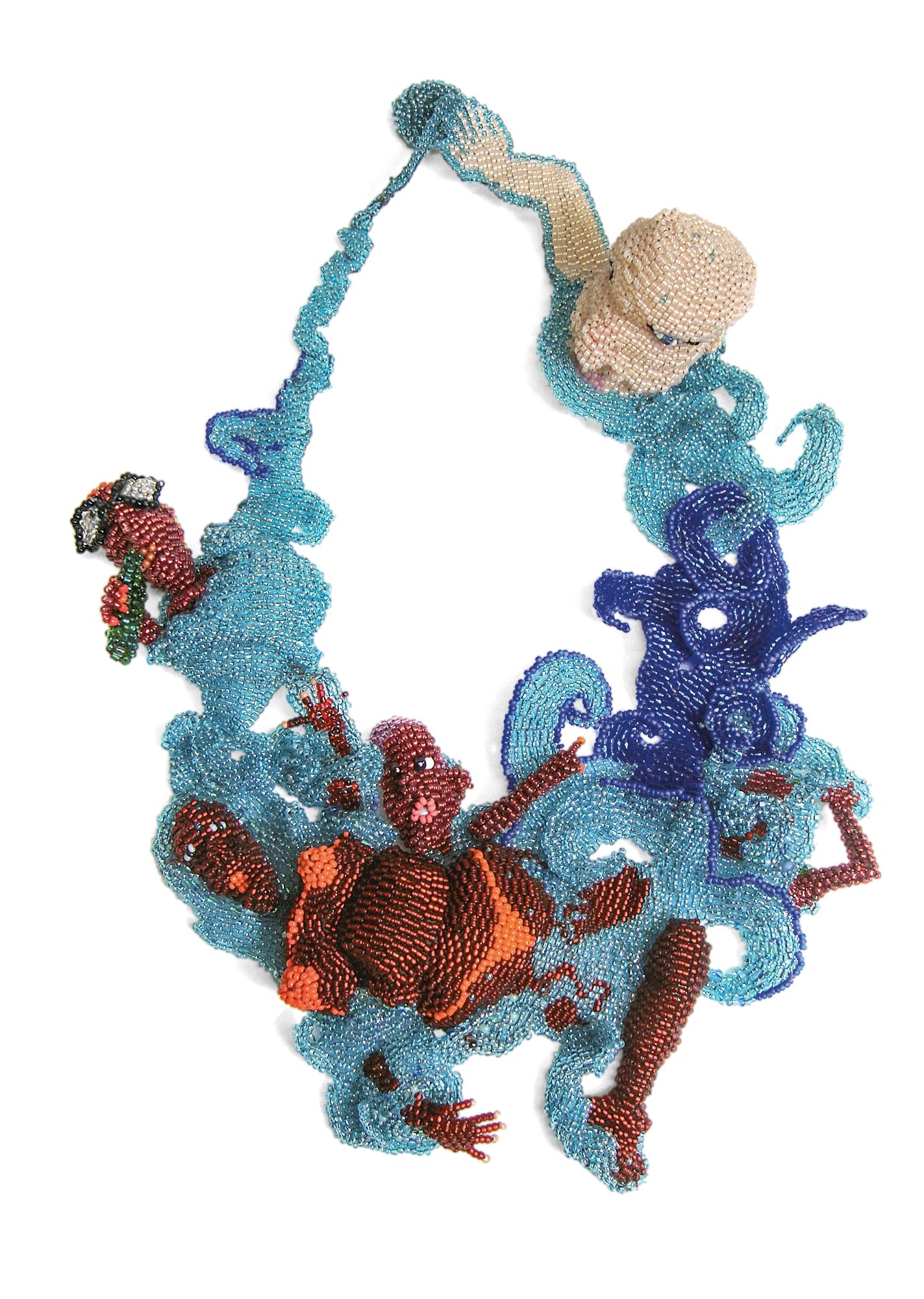



• A new large-scale commission titled The Threads That Unite My Seat to Knowledge (2024) that gathers heirloom family quilts to honor generations of makers in Scott’s family and create a storytelling environment within the exhibition.
• A fashion vignette featuring expressive garments Scott made for herself and friends beginning in the 1970s and sculptural necklaces such as What You Mean Jungle Music (1987) and Hunger (1991) that bridge performance and sculpture, showing how wearing difficult truths can incite conversations about social justice.
• Significant examples from iconic cycles of work reunited for the first time in many years, including Scott’s "Mammy/Nanny” series of the 1980s-90s; riffs on the watermelon trope such as Man Eating Watermelon (1986); and works from her “Still Funny” series that show Scott confronting American history and racial violence in the U.S. and abroad.
Joyce J. Scott performs Walk a Mile in My Drawers, Theatre Project, Baltimore, May 18-19, 2006. Image courtesy of Kel C. Millionie. Photo by Kel C. Millionie
• Ephemera and rare performance footage that bring to life Scott’s earliest performances with Robert Sherman (late 1970s); her legendary “Thunder Thigh Revue” act with Kay Lawal- Muhammad (1985-90); and solo theater pieces such as “Generic Interference/Genetic Engineering” (1988-95) and “Walk a Mile in My Drawers” (2006).
• A communal weaving area echoes Scott’s improvised performances from the 1970s and invites a new generation to discover this collaborative artform. The loom and tables will be periodically activated by Scott and other teaching artists with materials provided by Scrap B-More. Visitors may participate any time; completed works will be presented in the gallery then raffled with proceeds going to support a scholarship fund established by the artist at MICA.Joyce Scott
Joyce J. Scott. Mammie Wada. 1981. Baltimore Museum of Art: Gift of J.B. Hanson and Tom Haulk, Baltimore. © Joyce Scott courtesy Goya Contemporary, photo: Mitro Hood
“Joyce J. Scott’s sophisticated and virtuosic use of a wide range of materials brings beauty and biting irony to bear on subjects ranging from the traumatic to the joyous and transcendent,” said co-curators Wichmann and Manchanda. “Her intergenerational practice is radical in its commitment to community and place while building self-awareness and empathy. Those who already know Scott’s intimate and revelatory work will be astonished to see the many facets of her practice brought together—and those who encounter her work for the first time can expect to be blown away.”




Installation view of Joyce J. Scott: Walk a Mile in My Dreams at the Baltimore Museum of Art, March 2024. Photo by Mitro Hood.
Catalog
A fully illustrated 288-page catalog—co-published by SAM and BMA and distributed by Yale University Press—offers a critical resource that introduces the richness and complexity of Scott’s work through new scholarship, artist reflections, and a selection of vital out-of-print source materials. In addition to an introduction co-authored by Manchanda and Wichmann, the publication features two thematic interviews with the artist by Dr. Leslie King Hammond, Dean Emeritus of the Maryland Institute College of Art, and Valerie Cassel Oliver, Sydney and Frances Lewis Family Curator of Modern and Contemporary Art at the Virginia Museum of Fine Arts. Essays on key aspects of Scott’s work are contributed by scholars Tiffany E. Barber, Angela N. Carroll, Henry J. Drewal, Ashley Minner Jones, and Lowery Stokes Sims. A cross-generational group of artists—Oletha DeVane, Sonya Clark, Kay Lawal-Muhammad, Jeffrey Gibson, Malcolm Peacock, and William Rhodes—reflect on Scott’s influential role as artist, mentor, and educator. The out-of-print catalogue from Scott’s 30-year retrospective organized by guest curator George Ciscle at the BMA with students from MICA’s Exhibition Development Seminar remains a vital resource on Scott’s work and has been digitized and archived: artbma.org/kickinit

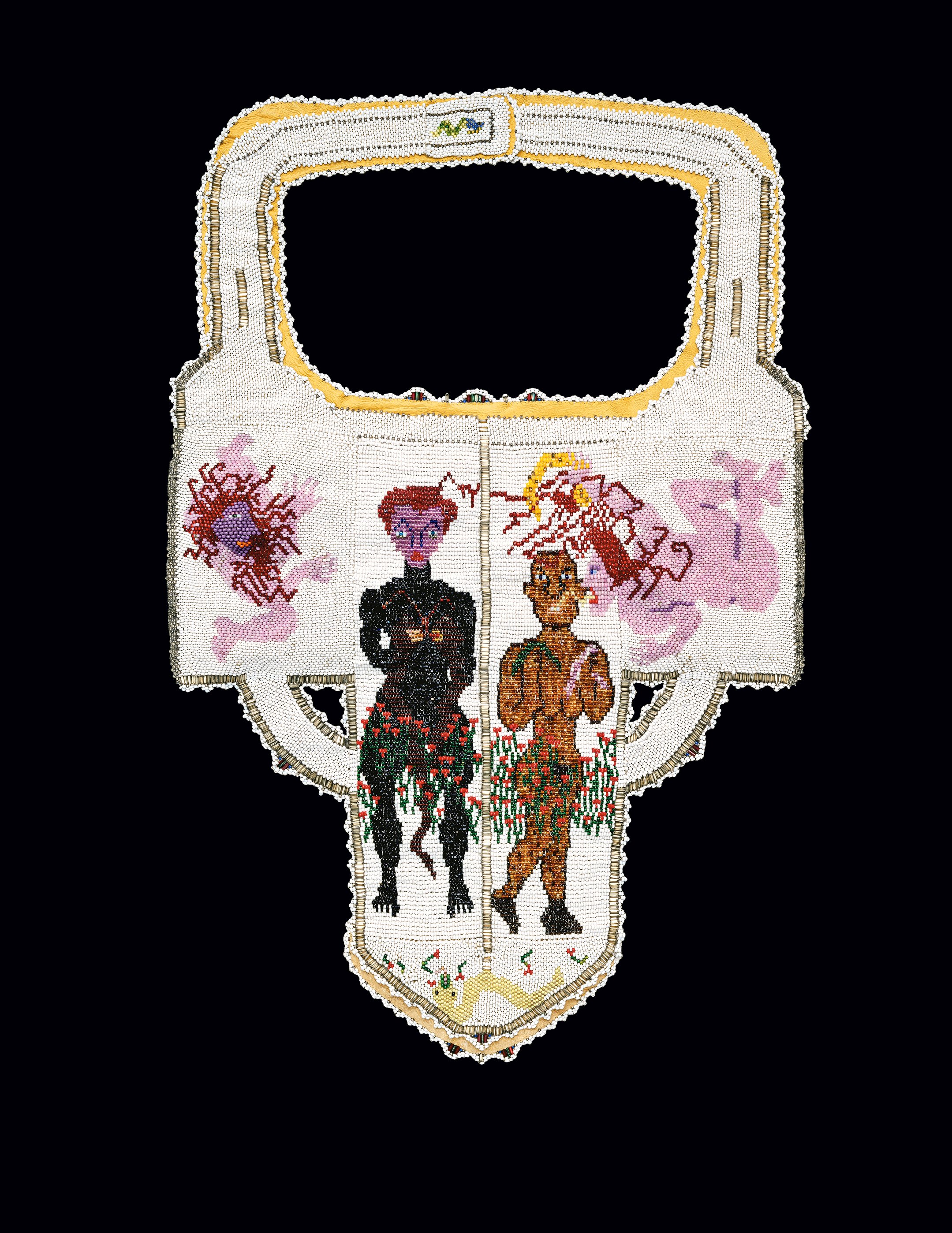


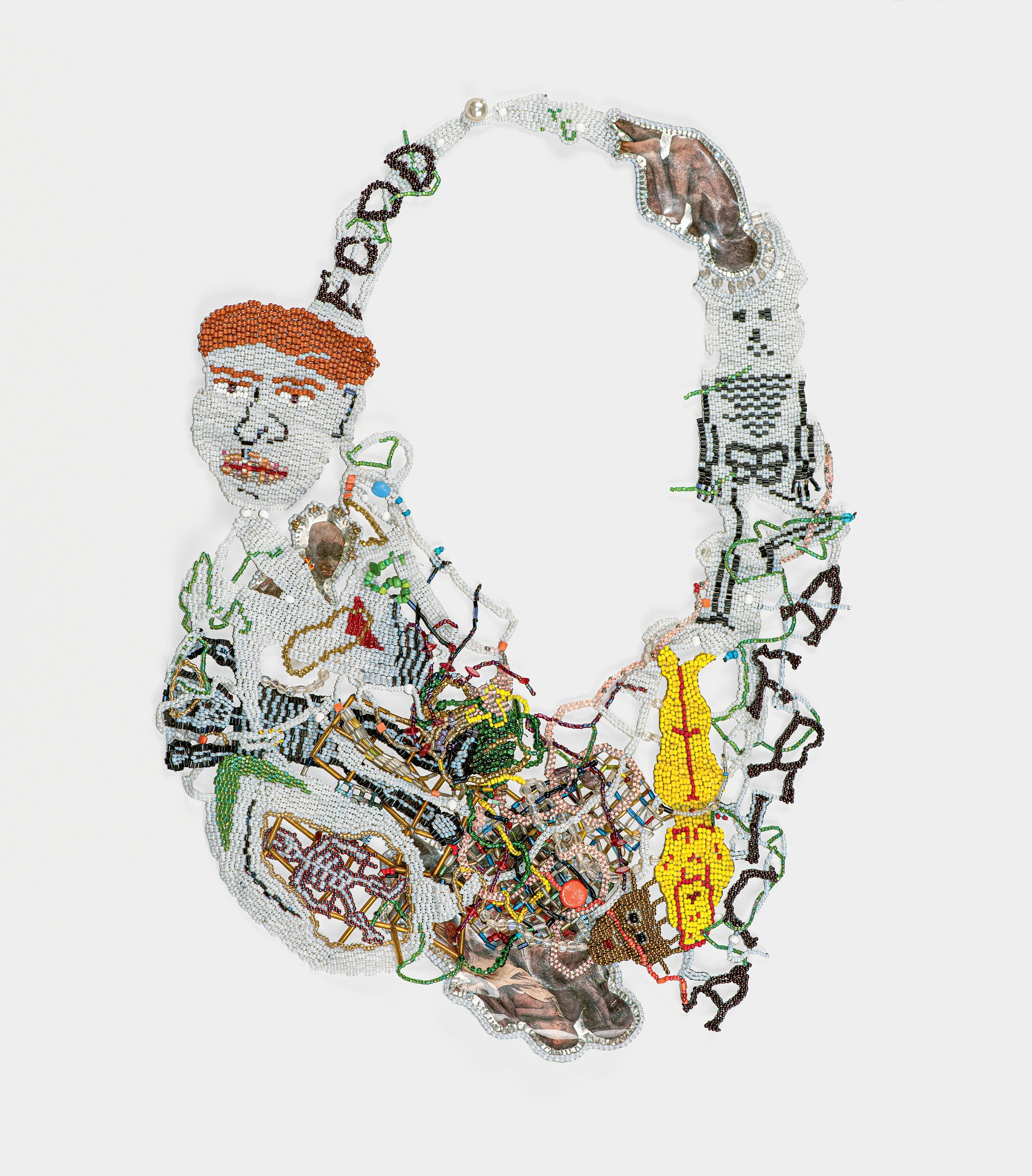
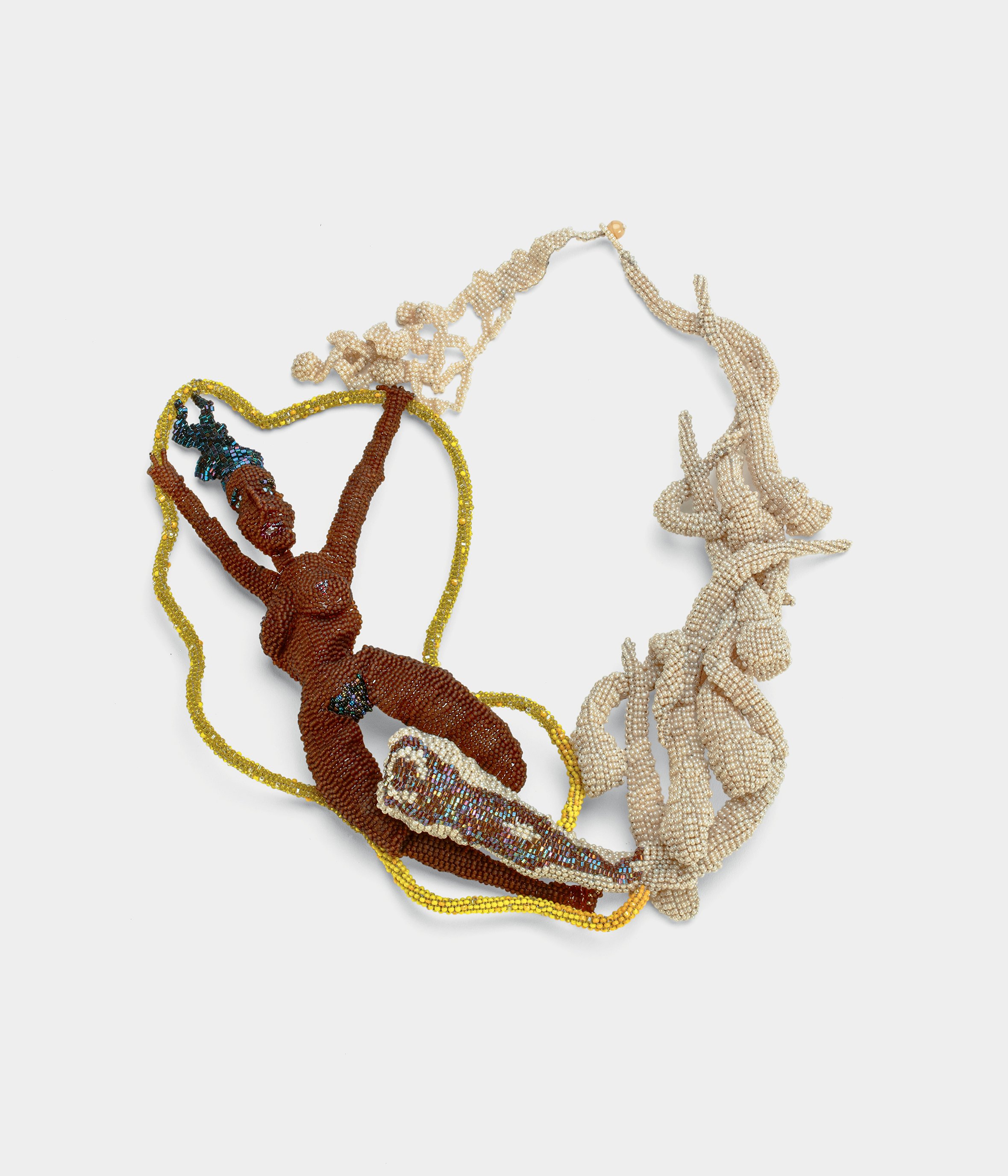

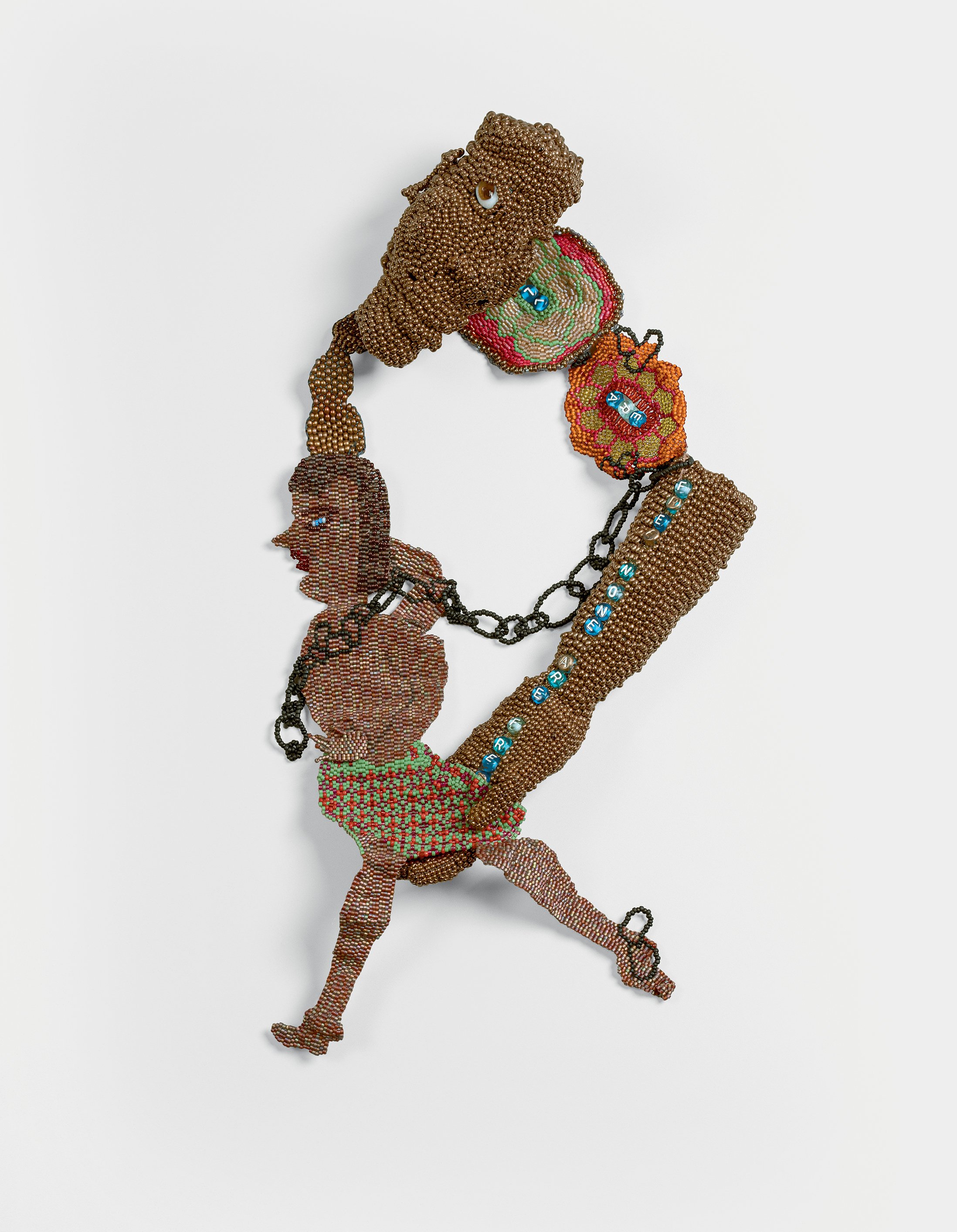



Sponsors
This exhibition and national tour are made possible by substantial grants from the Ford Foundation, Henry Luce Foundation, Terra Foundation for American Art, and The Andy Warhol Foundation for the Visual Arts. In Baltimore, the exhibition is also supported by the Alvin and Fanny B. Thalheimer Exhibition Endowment Fund, the Suzanne F. Cohen Exhibition Fund, Bank of America, Wagner Foundation, Joanne Gold and Andrew Stern, The Jacques and Natasha Gelman Foundation, Transamerica, the National Endowment for the Arts, the Clair Zamoiski Segal and Thomas H. Segal Contemporary Art Endowment Fund, Goya Contemporary Gallery and Martha Macks-Kahn, The Coby Foundation, Ltd., and the American Craft Council.
Courtesy of Joyce J. Scott
Joyce J. Scott
Joyce J. Scott (b. 1948, Baltimore, MD) earned her Bachelor of Fine Arts from the Maryland Institute College of Art and a Master of Fine Arts from the Instituto Allende in Mexico. In 2018, she was awarded an honorary fellowship from NYU, as well as honorary doctorates from both MICA and the California College of the Arts. In 2022, she was awarded an honorary doctorate from Johns Hopkins University. Her work has been the subject of numerous exhibitions, with major solo shows such as Joyce J. Scott: Harriet Tubman and Other Truths at Grounds for Sculpture, Hamilton, NJ (2018); Joyce J. Scott: Truths and Visions at the Museum of Contemporary Art, Cleveland (2015); Maryland to Murano: The Neckpieces & Sculpture of Joyce J. Scott at the Museum of Arts and Design, New York (2014-15); and Joyce J. Scott: Kickin’ It with the Old Masters at the BMA (2000). She has received commissions, grants, awards, residencies, and honors, including from MacArthur Foundation Fellowship (2016), Lifetime Achievement Award from the Women’s Caucus for the Arts, Anonymous Was a Woman, and Smithsonian Visionary Artist Award, among others. Scott’s work is also included in many public collections, including the BMA, Metropolitan Museum of Art, Brooklyn Museum of Art, Los Angeles County Museum of Art, National Museum of African American History and Culture, the Seattle Art Museum, and many others.
Baltimore Museum of Art
Founded in 1914, the Baltimore Museum of Art (BMA) inspires people of all ages and backgrounds through exhibitions, programs, and collections that tell an expansive story of art—challenging long-held narratives and embracing new voices. Our outstanding collection of more than 97,000 objects spans many eras and cultures and includes the world’s largest public holding of works by Henri Matisse; one of the nation’s finest collections of prints, drawings, and photographs; and a rapidly growing number of works by contemporary artists of diverse backgrounds. The museum is also distinguished by a neoclassical building designed by American architect John Russell Pope and two beautifully landscaped gardens featuring an array of modern and contemporary sculpture. The BMA is located three miles north of the Inner Harbor, adjacent to the main campus of Johns Hopkins University, and has a community branch at Lexington Market. General admission is free so that everyone can enjoy the power of art.
Visitor Information
General admission to the BMA is free. The BMA is open Wednesday through Sunday from 10 a.m. to 5 p.m., with extended hours on Thursdays until 9 p.m. The Sculpture Gardens are open Wednesday through Sunday, 10 a.m. to dusk. The museum and gardens are closed New Year’s Day, Juneteenth, July 4, Thanksgiving Day, and Christmas Day. The BMA is located at 10 Art Museum Drive, three miles north of Baltimore’s Inner Harbor. For general museum information, call 443-573-1700 or visit here.
For more information about this exhibition and other exhibitions at the Baltimore Museum of Art, please visit their site here. The museum can also be found on YouTube, Facebook, and Instagram.






